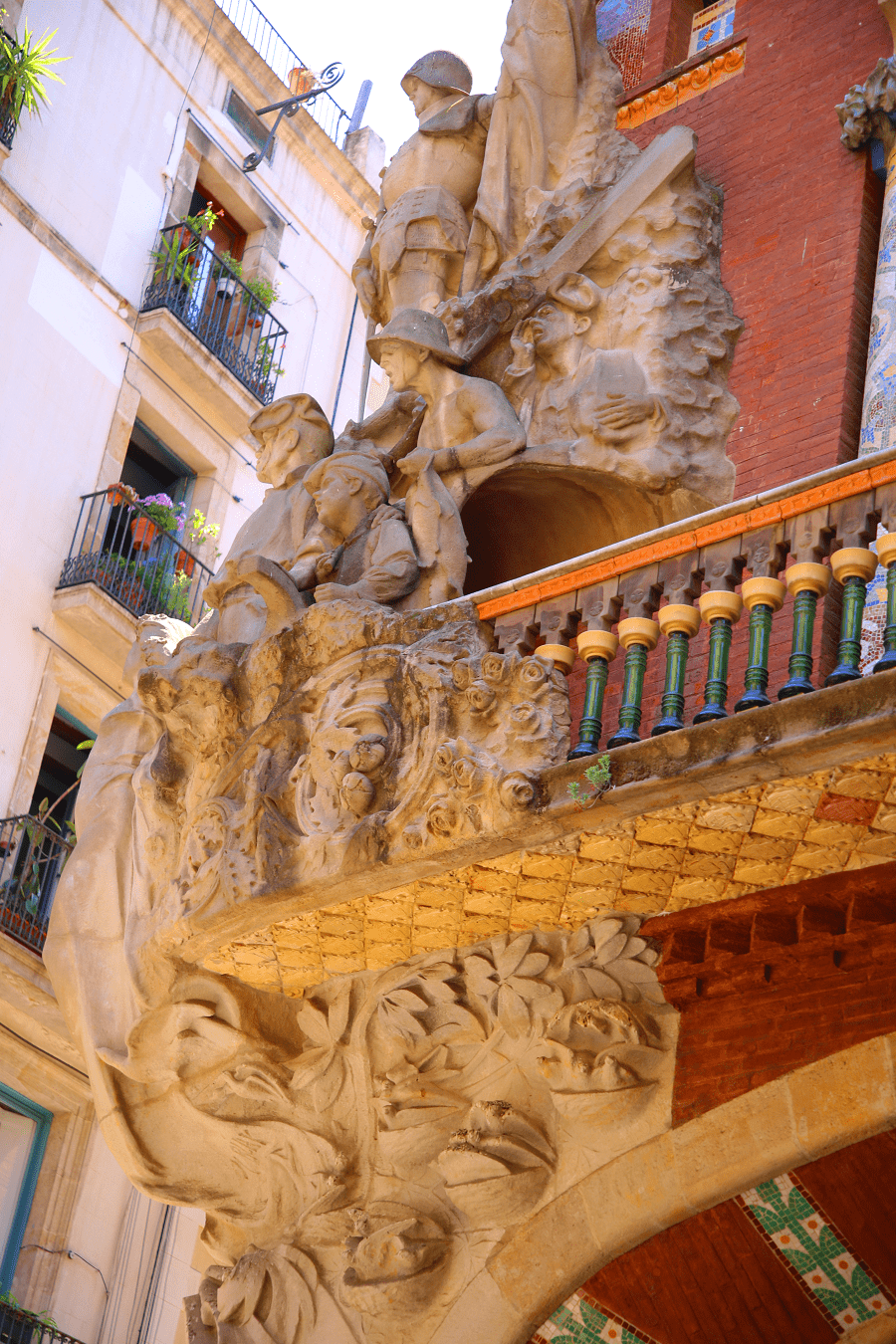Palau de la Música Catalana (English: Palace of Catalan Music) is a concert hall in Barcelona, Catalonia, Spain.
Designed in the Catalan modernista style by the architect Lluís Domènech i Montaner, it was built between 1905 and 1908 for Orfeó Català, a choral society founded in 1891 that was a leading force in the Catalan cultural movement that came to be known as the Renaixença (Catalan Rebirth). It was inaugurated on 9 February 1908.
The construction project was mainly financed by Orfeó Català, but important financial contributions also came from Barcelona’s wealthy industrialists and bourgeoisie. The palace won the architect an award from the Barcelona City Council in 1909, given to the best building built during the previous year.
Between 1982 and 1989, the building underwent extensive restoration, remodeling, and extension under the direction of architects Oscar Tusquets and Carles Díaz.
In 1997, the palace de la Música Catalana was declared a UNESCO World Heritage Site along with Hospital de Sant Pau. Today, more than half a million people a year attend musical performances in the Palau that range from symphonic and chamber music to jazz and Cançó (Catalan song).
The facade is richly adorned with mosaic pillars, each one with a different floral design. Busts of great masters such as Beethoven, Bach and Wagner bear witness to the prevailing taste in music at the time. On one corner is a sculpture dedicated to the Catalan folk song and ruled by the patron saint of Catalonia, Sant Jordi. Elements from the Gothic and Moorish architectural styles have also been incorporated into the design of the facade.
Petit Palau
The new six-story tower, projected by Oscar Tusquets and officially opened in 1989, houses dressing rooms, a library, and archives.
Opened in 2004, the Petit Palau (“small palace”) is 11 metres below the square that was created in the work of 1982-1989 between the palace and the neighbouring church. It has a seating capacity of 538 people and is equipped with variable acoustics for different types of music and spoken word. It also possesses the latest in audiovisual technology. Like the other additions, it was designed in the spirit of Domènech i Montaner. It is light and transparent like the palace proper, but at the same time it is modern in its great flexibility for different cultural, social, and business uses.
The program for the 2022/23 season includes, for example, flamenco, classical music during the “Bachcelona” festival, Mozart’s Requiem with the Orfeó Català choir, classical during the Mozart festival, Vivaldi’s Four Seasons, music by Hans Zimmer & John Williams, Spanish guitar music , Ballet Swan Lake, Jazz, Abba Tribute, Pop Music, Beatles+Queen+ABBA, Haydn, Beethoven & Widmann – played by Anne-Sophie Mutter and much more.
World-famous artists, but also unknown talents perform here.
Address: C/ Palau de la Música, 4-6, 08003 Barcelona, Spain
Working hours
Tuesday 9 AM–8 PM
Wednesday 9 AM–8 PM
Thursday 9 AM–8 PM
Friday 9 AM–8 PM
Saturday 9 AM–8 PM
Sunday 9 AM–8 PM
Monday 9 AM–8 PM
Prices
The tickets for Palau de la Música self-guided tour cost €15 for all guests aged 10 years and above. The Live guided tour of Palau de la Música tickets are priced at €19 for all visitors above the age of 10. Children up to the age of 11 years get free admission.
Barcelona full guide
Barcelona theaters and entertainment
Barcelona FC and sport infrastructure
Barcelona administrative division
See here Catalan travel guide





















